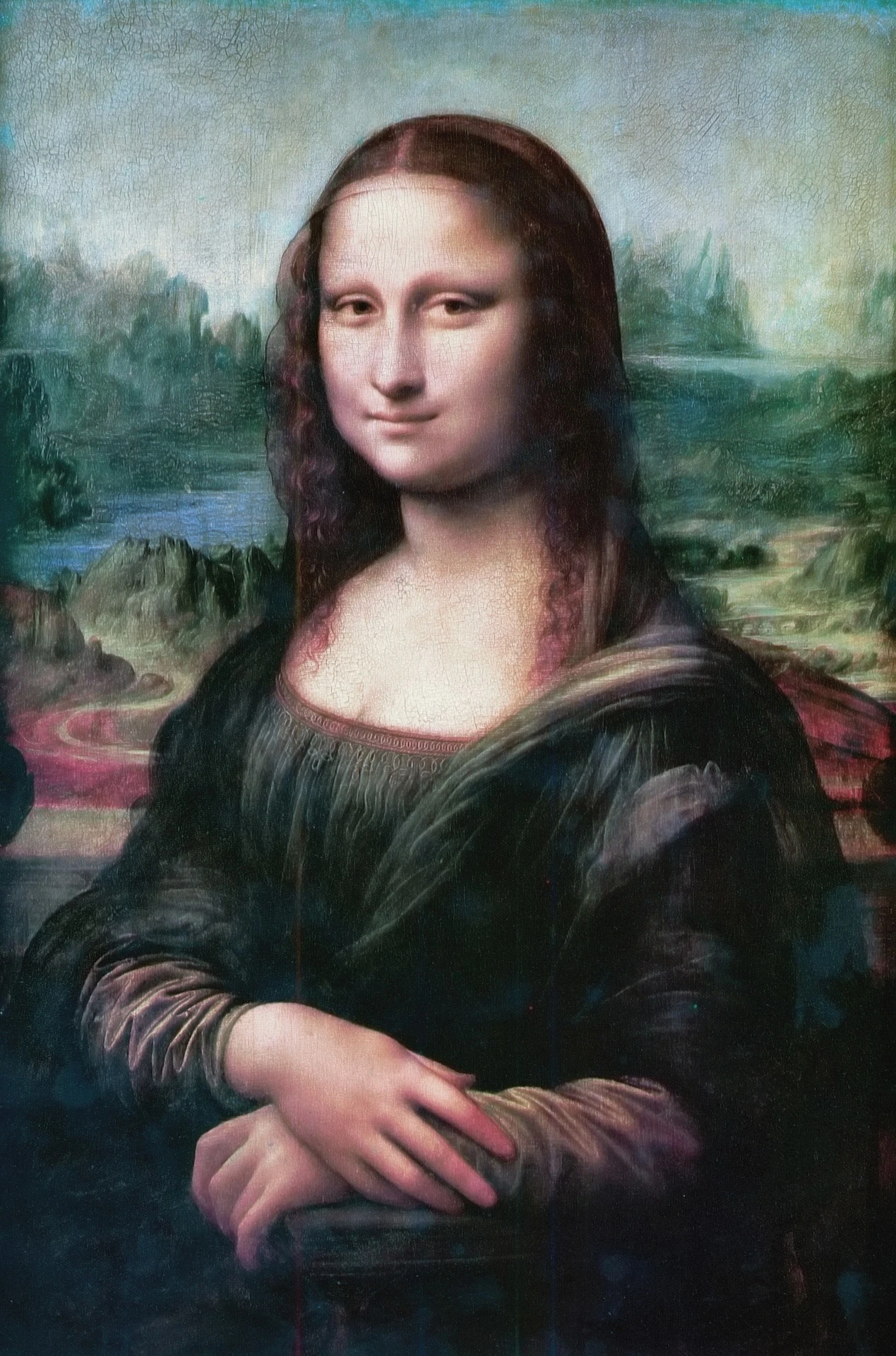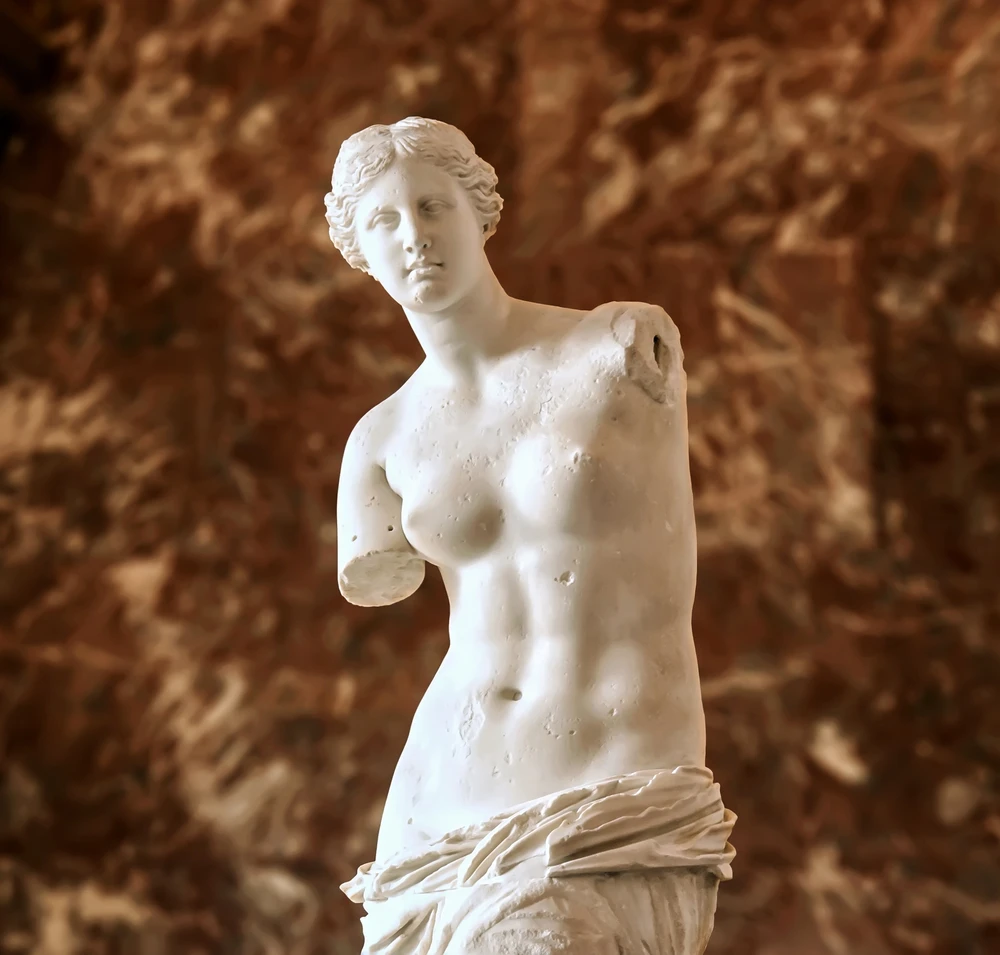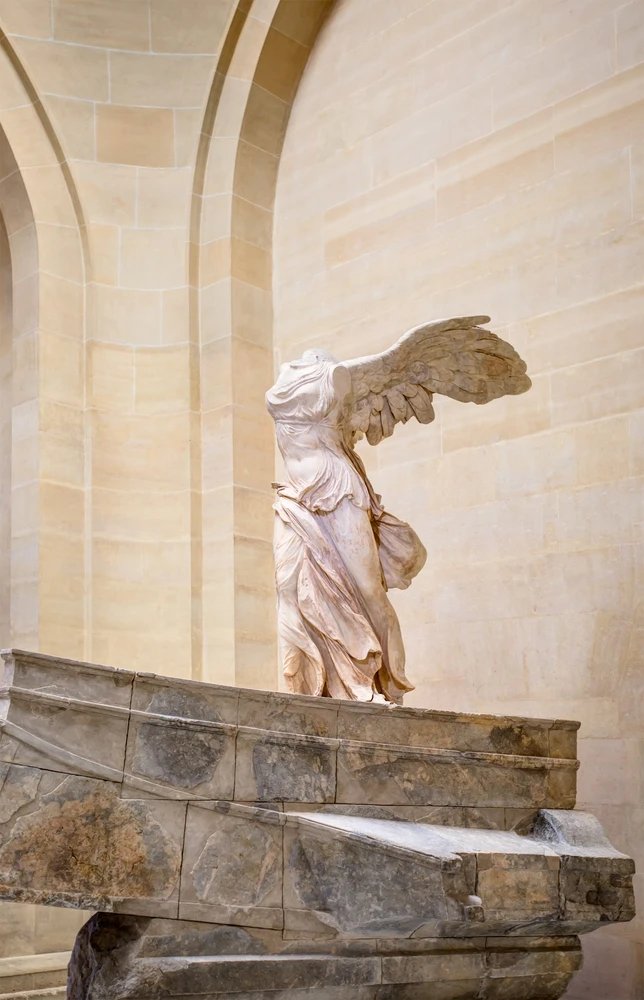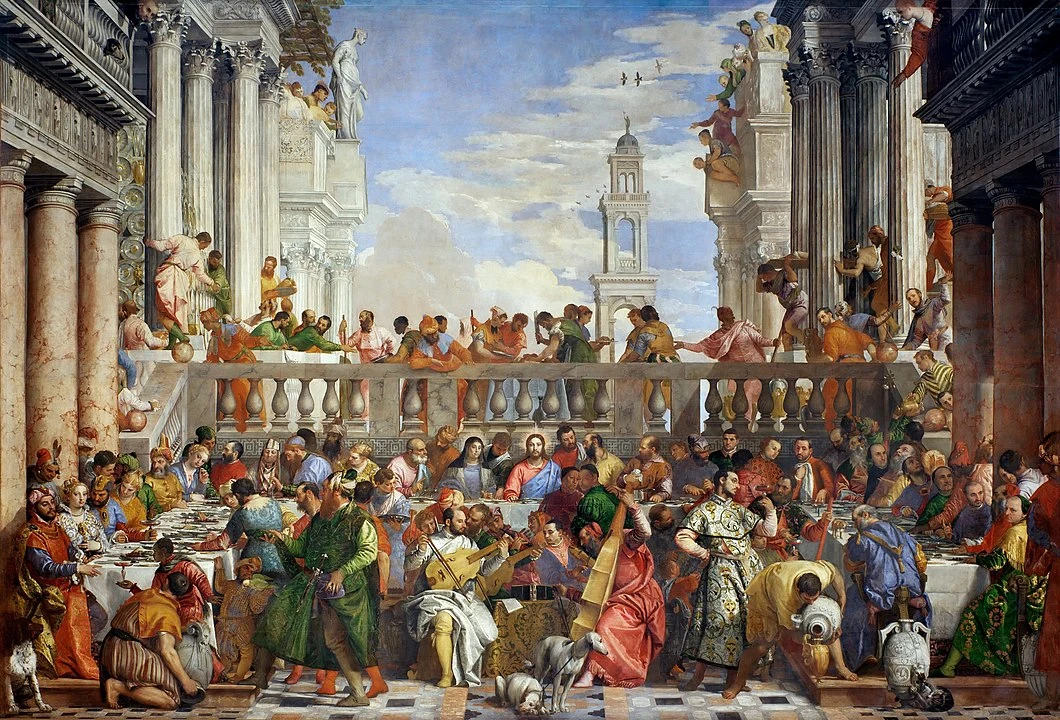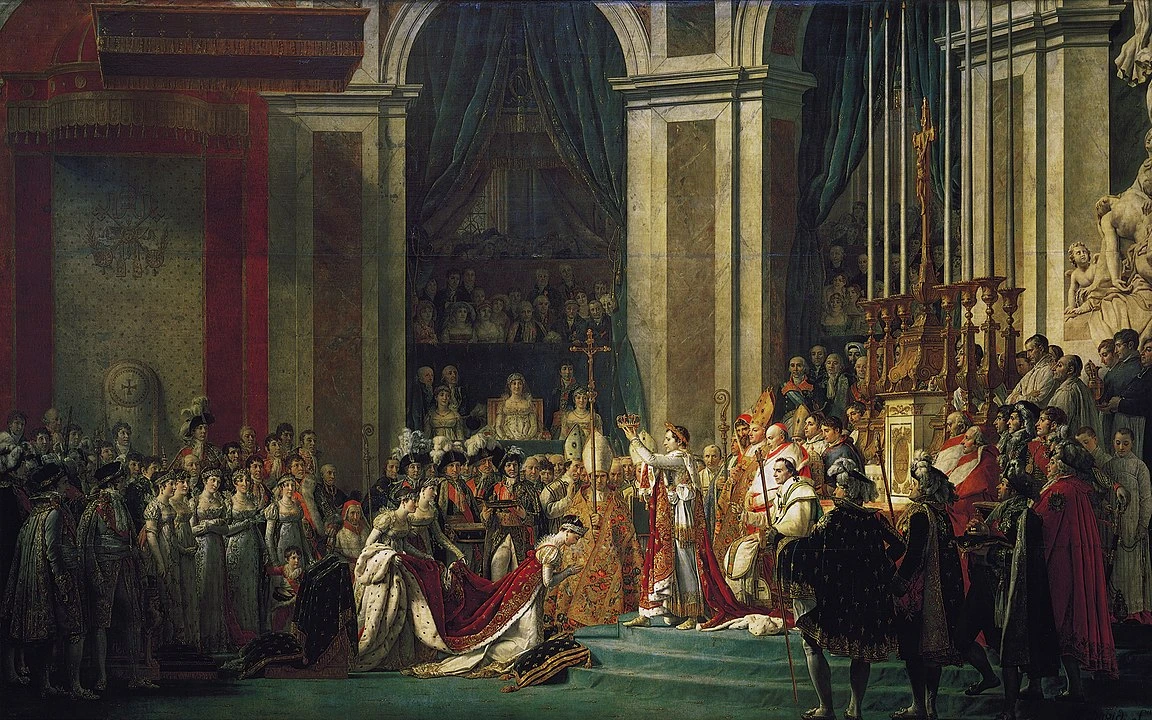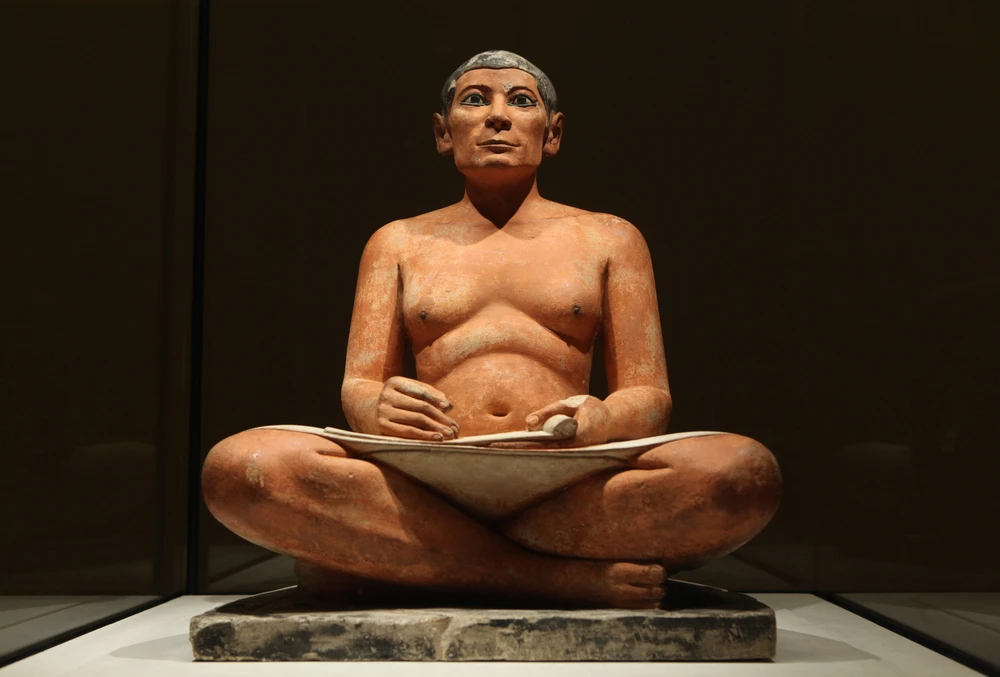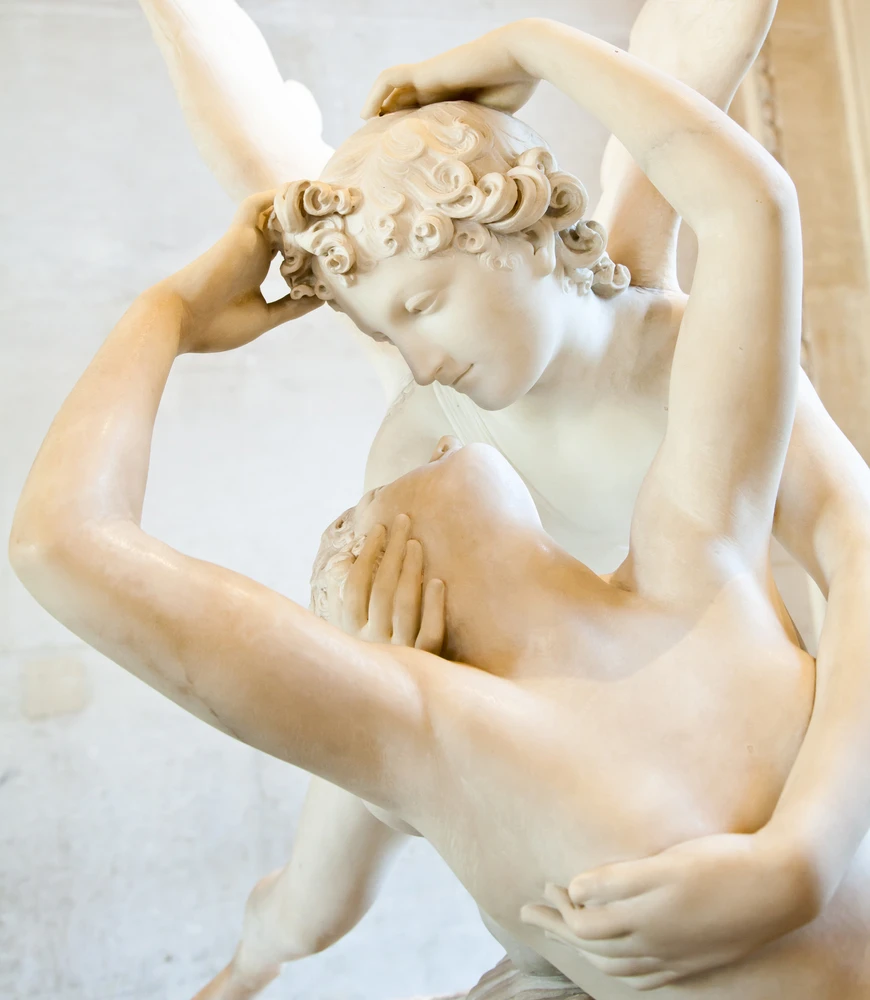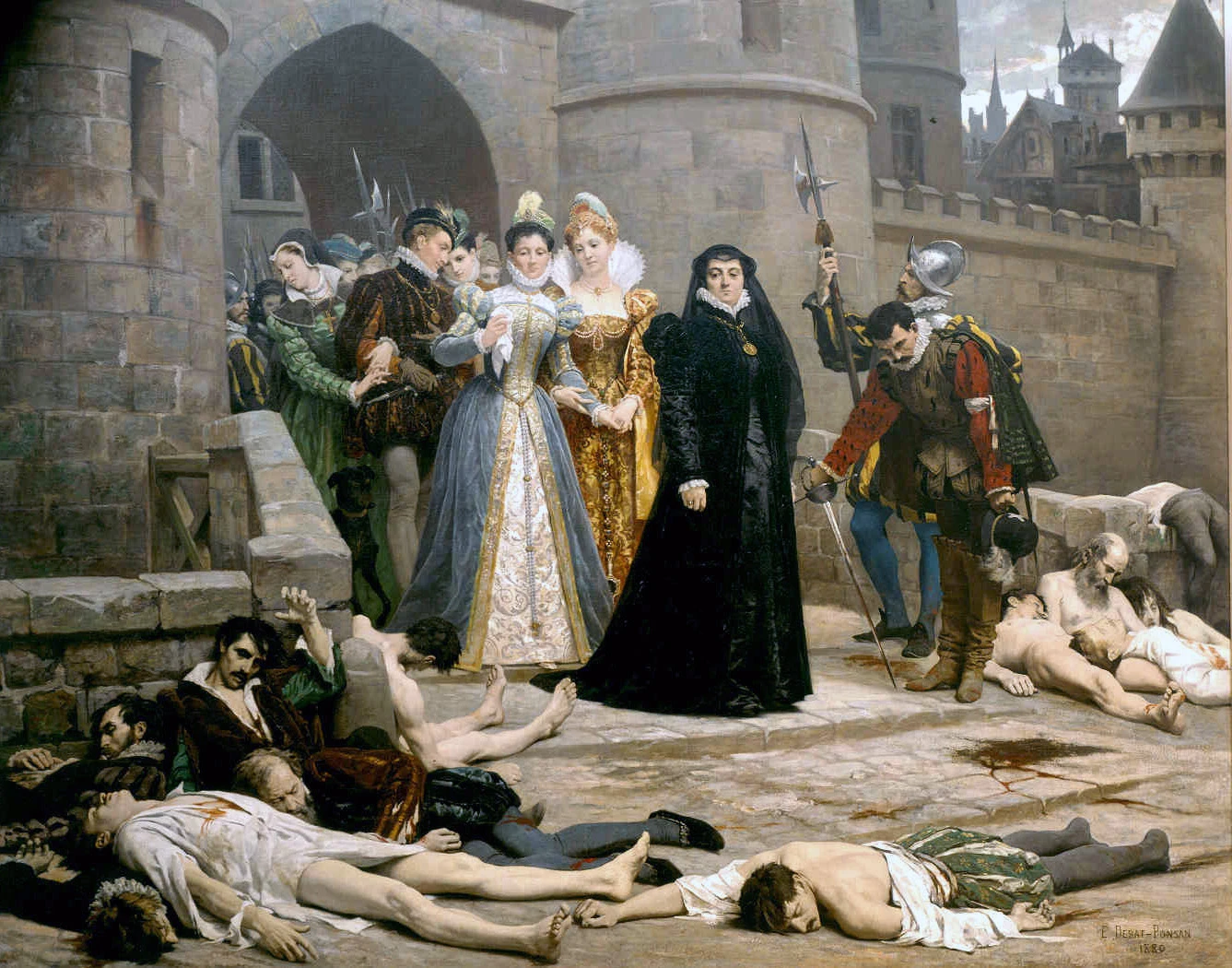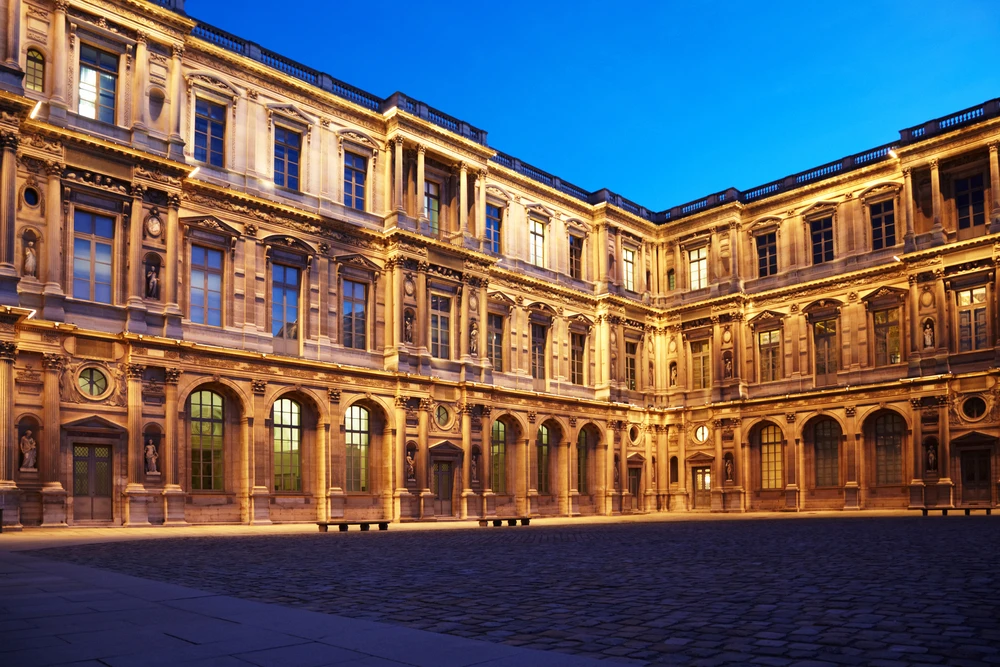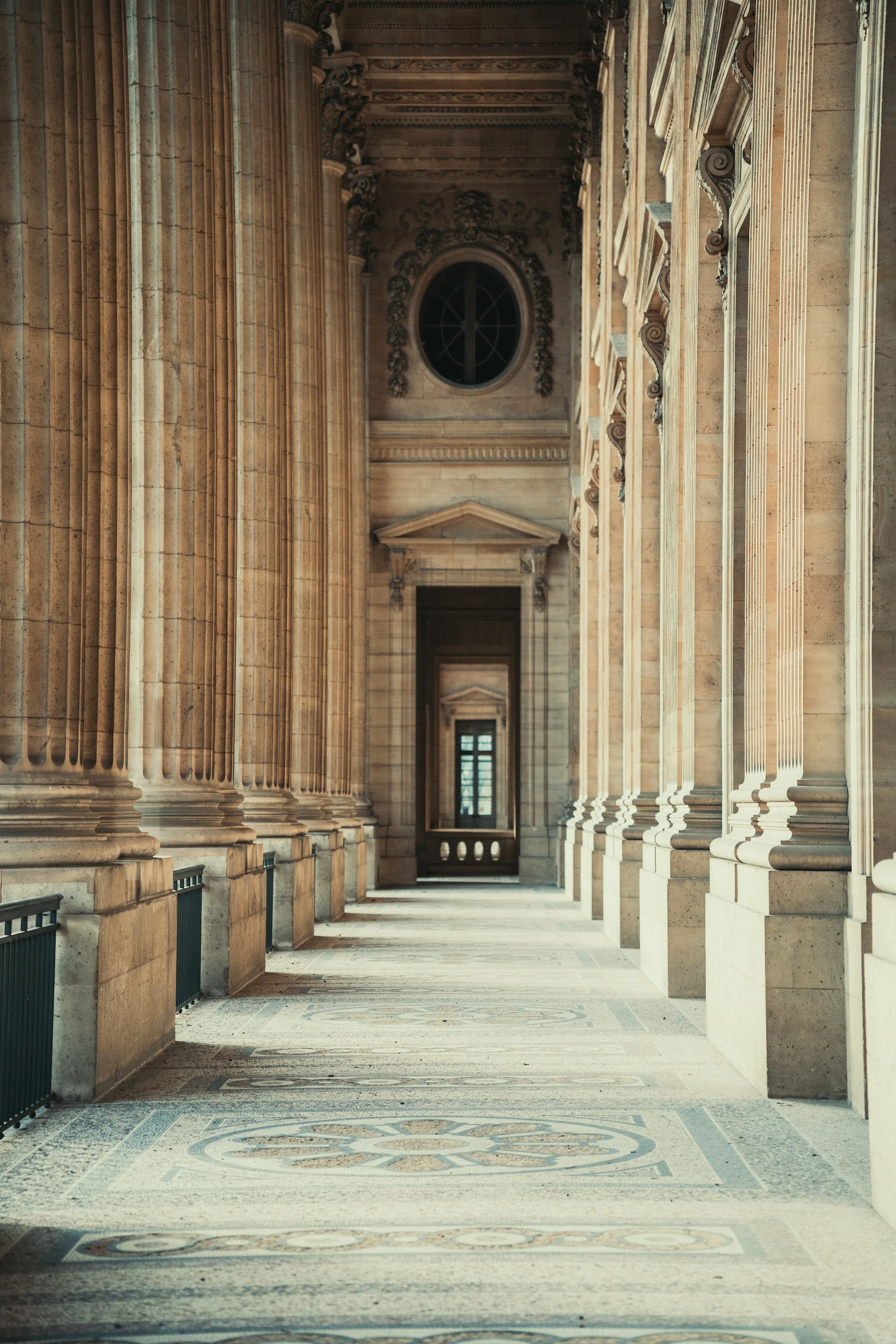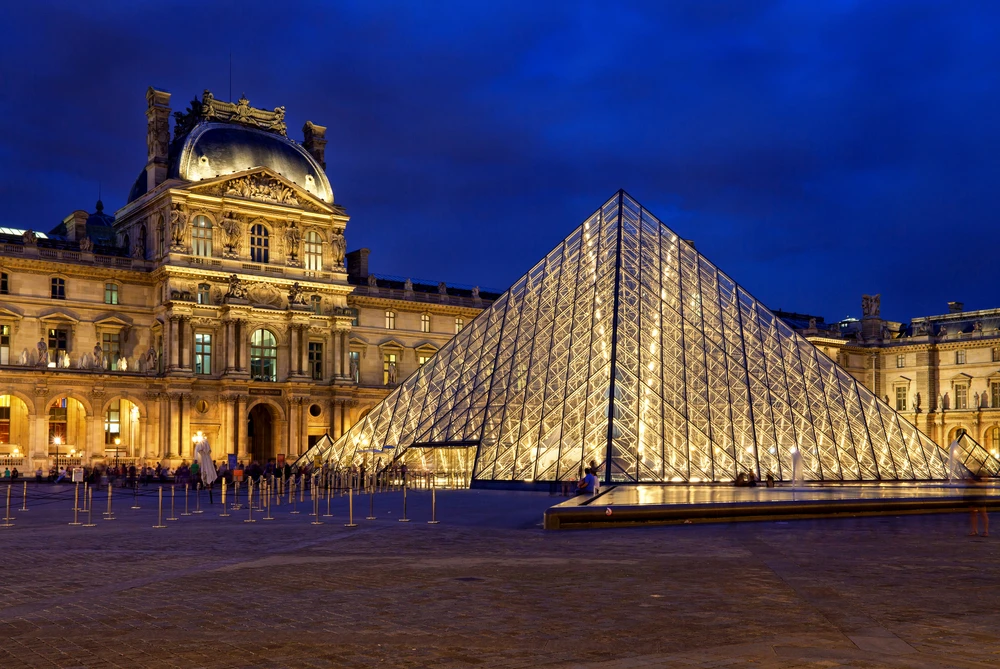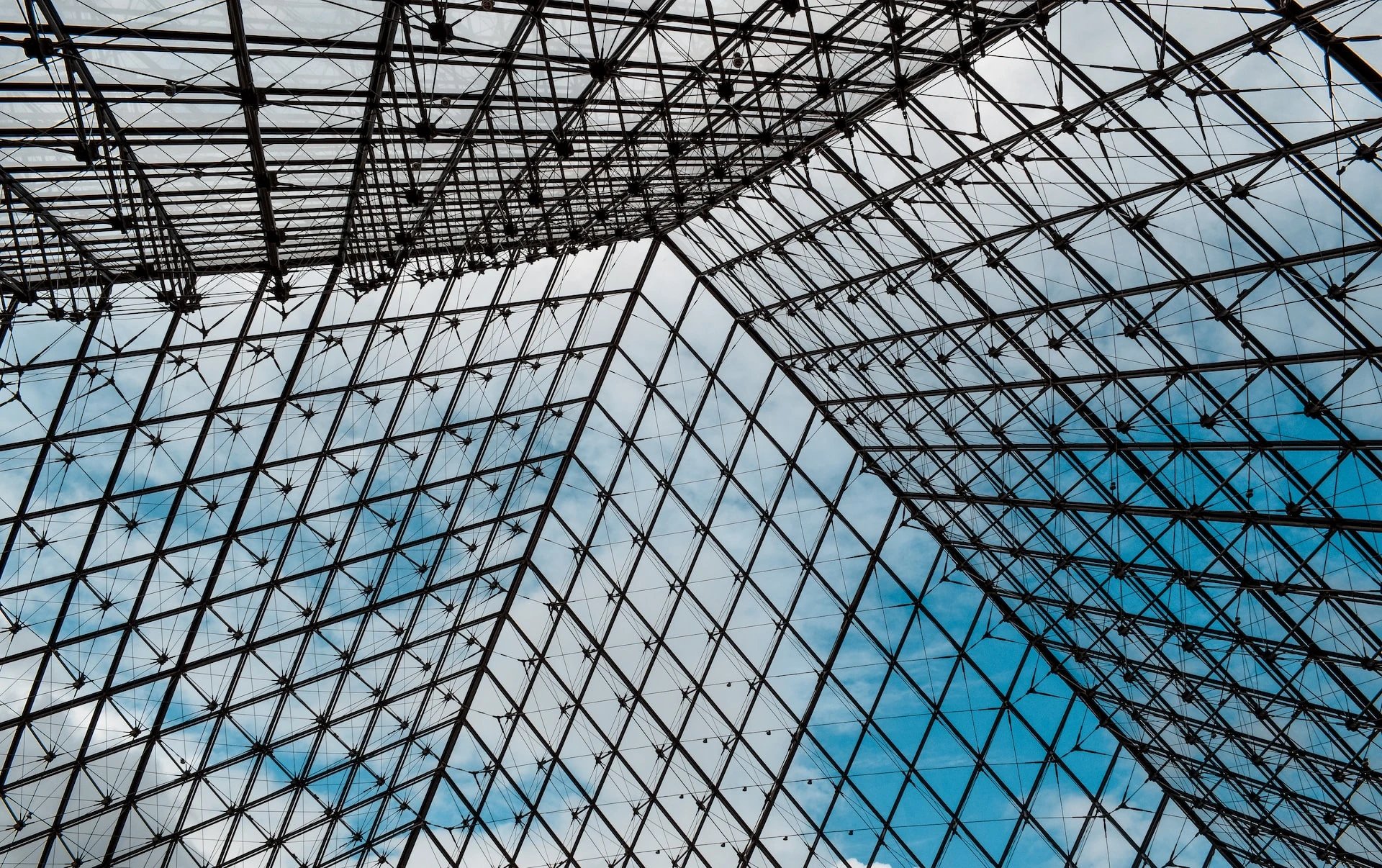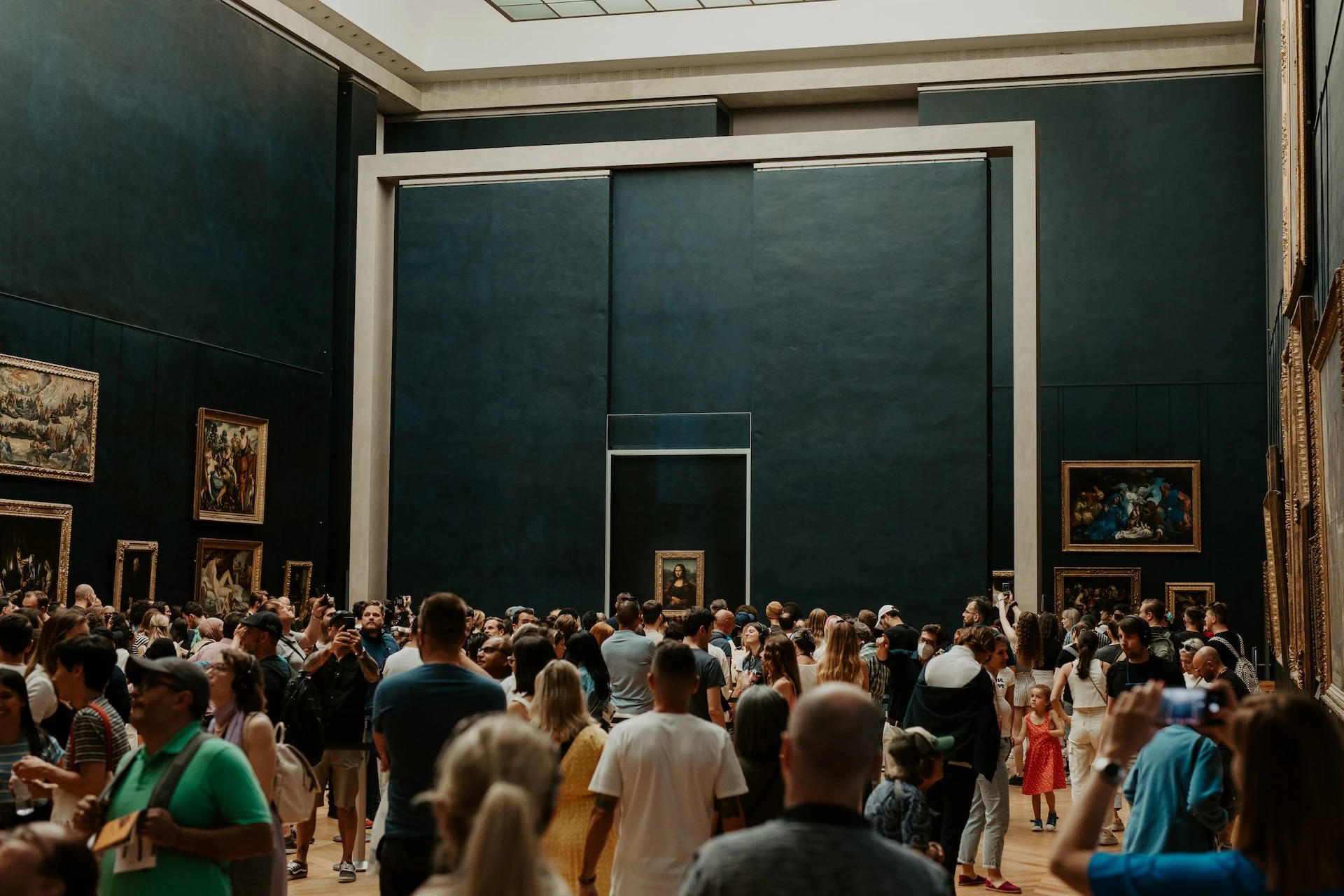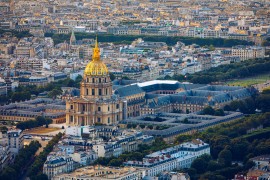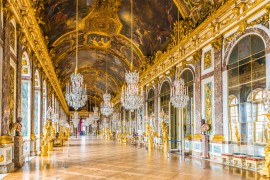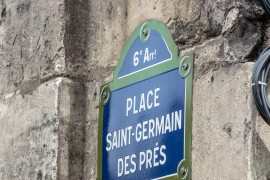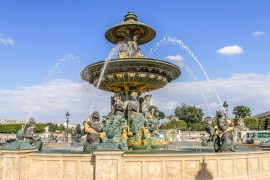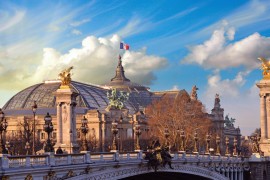Top 10 works to see at the Louvre
1 The Mona Lisa
Photo by Image by Welcome to All ! ツ from Pixabay
Frenchmen say "la joconde". Made by Leonardo de Vince in the early 16th century (between 1503 and 1517) it may be the portrait of Lisa Del Giocondo, born Lisa Gherardini, wife of Francesco Del Giocondo who would have commissioned the painting. Nicknamed Mona Lisa, the woman depicted in the painting is famous for her enigmatic smile. It was stolen on August 21, 1911 before being recovered in 1912 and returned to the Louvre in 1914. The two world wars were the occasion for impromptu trips for the Mona Lisa which was stored in castles far from Paris (Chambord for example...) and even in private homes, before returning to its place with Peace. The last time was in 1945.
Where the Mona Lisa is exhibited in the Louvre: DENON wing, Room 711 Salle des Etats (or Mona Lisa room).
2 The Venus de Milo
La vénus de Milo / Iphoto Reidl/Shutterstock.fr
It's been a little more than 2 centuries (1821) since the Venus de Milo can be seen in the Louvre. "De milo" because it was found in the Greek island of Milo in April 1820 (and her arms were never found). It was probably created between 150 and 130 BC.
Location of the Venus of Milo in the Louvre: Ground floor of the Sully wing, room 16, Department of Greek Antiquities.
3 The Victory of Samothrace
La Victoire de Samothrace / photo muratart/Shutterstock.fr
Impressive, since it measures nearly 3 meters without its base, it is one of the most famous works in the Louvre. It probably dates from the beginning of the 2nd century BC. It was discovered on April 18, 1863 by Charles Champoiseau (1830-1909) during excavations on the island of Samothrace, hence its name.
Location of the Samothrace Victory exhibition at the Louvre: Department of Greek Antiquities, Denon Wing Level 1, Daru Staircase Room 703.
4 The Raft of the Medusa
"The Raft of the Medusa" by Théodore Géricault (1791-1824) was painted in 1818-1819 and is on display at the Louvre.
Of large size (4.91 M by 7.16 M) this painting was made by the painter Théodore Géricault (1791 - 1824) between 1818 and 1819, this tableu is the vision of the painter of the tragic event of the sinking of the ship "La Méduse" on July 2, 1816 off the coast of Mauritania. While 147 people embarked on "the machine", the nickname given by the builders to the raft constructed to leave the sandbank where the frigate "La Méduse" had run aground, only 15 were rescued by another ship, the "Argus", and only 10 were still alive when they reached land after the wreck...
Location of the Raft of the Medusa exhibition at the Louvre: DENON Wing, Room 700 (level 1) Mollien Room (Romantic paintings department).
5 The Wedding at Cana
The Wedding at Cana (1563) by Paul Veronese (1528-1588). Louvre Museum in Paris.
It is huge: 6.77 M by 9.94 M and has 130 figures. Made in 1563 by Paul Veronese (1528-1588) for the monks of a Benedictine monastery in Venice, it was taken by France during the Italian campaigns in 1797. Austria demanded that it be returned to Italy at the end of Napoleon's Empire, but the fragility of the painting eventually convinced them to leave it in the Louvre. An exact copy was installed in 2007 at the Santo Giorgio Maggiore monastery in Venice in the exact location of the original.
Location of the Marriage at Cana exhibition at the Louvre: DENON Wing, Room 711 Salle des Etats (or Mona Lisa Room).
6 Michelangelo's slaves
The Dying Slave by Michelangelo (1513-1515) Photo by Jean-Baptiste D. on Unsplash
These two statues (which have just been restored) were made between 1513 and 1515 in Rome by Michelangelo (1475-1564). They were offered to King Francis I. There is the rebel slave and the dying slave.
Michelangelo's slaves are on display at the Louvre Museum: DENON wing, first floor, room 403.
7 The coronation of Napoleon
The Coronation of Napoleon "Coronation of the Emperor Napoleon I and the Empress Josephine in the Cathedral of Notre-Dame de Paris, December 2, 1804" by Jacques-Louis DAVID (1807 1809) Musée du Louvre Paris.
From its full name "Coronation of Emperor Napoleon I and Empress Josephine in the Cathedral of Notre-Dame de Paris, December 2, 1804" it was painted by Jacques-Louis DAVID between 1807 and 1809 in memory of the coronation of the emperor on December 2, 1804. It measures 6,21 M by 9,70 M. The painting shows Napoleon, freshly crowned by Pope Pius VII who came especially to Paris, getting ready to place the crown of Empress on the head of his wife Josephine de Beauharnais in front of the Court and in particular in front of the mother of the Emperor, Laetizia Ramolino. For the anecdote, the painter represented himself in the gallery with his two twin daughters. For the anecdote (bis !) it is to the painter David that we owe the choice and the arrangement of the colors of the French flag blue white red.
Location of the exhibition of the coronation of Napoleon: DENON wing, Room 702 Daru room (paintings department).
8 The crouching scribe:
Le scribe accroupi du Musée du Louvre (2600 av J.C) Musée du Louvre / Par photo Vladimir Wrangel/Shutterstock.fr
Probably made in 2600 BC (so it is more than 4700 years old!), this crouching scribe, ready to work since the papyrus is unrolled (only the calamus is missing), comes from Saqqara where it was discovered in 1850 by Auguste Mariette. It has been in the Louvre since 1854. It measures 53.7 CM in height.
Location of the Crouching Scribe at the Louvre: Sully Wing, 1st floor, room 635, Department of Egyptian Antiquities.
9 Liberty Leading the People.
Liberty Leading the People / Eugène Delacroix (1830) Musée du Louvre Paris.
This famous painting by Eugène Delacroix (1798-1863) was painted in 1830. It measures 2.60 M by 3.25 M and depicts the insurrection in Paris during the "July Days" in 1830. What Delacroix represents is not freedom leading the people but simply (and this is the name the author gave to the painting) "a scene of barricades". It has become emblematic of the French Republic.
Location of the exhibition of "La liberté guidant le Peuple" by Eugène Delacroix, at the Louvre: DENON wing, 1st floor, room 700 (paintings department / Romanticism).
10 Psyche revived by Love's kiss
Psyche revived by the Kiss of Love at the Louvre / photo Paolo Gallo/Shutterstock.fr
This marble work is signed Antonio Canova (1757 - 1822). Made between 1787 and 1793 for John Campbell, this 1M55 work is one of the most romantic in the world.
Where Psyche revived by the Kiss of Love will be exhibited at the Louvre: DENON wing, room 4, Michelangelo gallery.
The Louvre has a long history
Fortress in the Middle Ages
The name sounds like beauty, culture, and even mystery. The Louvre is a huge museum, with the largest collection of masterpieces in the world. But it is also a concentration of French history. A fortress defending Paris in the Middle Ages, it became over time the palace of the kings of France. Philippe-Auguste had a fortress built in Paris in 1190 to watch over the Seine. It is located in what is today the Cour Carrée (it occupies barely a quarter of the courtyard). It became a place of treasure with the disappearance of the order of the Temple, it also became a royal residence with King Charles V who settled there in 1317.
Philip Augustus (1165 - 1223): builder of the Louvre fortress, which became the Palais and later the Louvre Museum / Battle of Bouvines, from the Bibliothèque Nationale de France collection.
Very austere, the large tower - the keep of the medieval castle - was destroyed by François I in 1517 and the construction of what would become the palace of the kings of France began until Louis XIV decided to build Versailles. It is from this site, the future Cour Carrée, that the construction of the palace that we know today begins. Each king of France put his mark on it after François 1er.
Witness of the dark hours of the Saint-Barthélémy.
Crossing the Cour Carrée, we place our steps in those of history. It roared here on August 24, 1572. On that day, the bells of Saint-Germain-l'Auxerrois gave the signal for the massacre of Protestants in Paris during the Saint Bartholomew's Day.
A painting that shows what the Saint Bartholomew's Day in the Louvre might have been like: Un matin devant la porte du Louvre, oil on canvas by Edouard Debat-Ponsan 1880 Clermont-Ferrand Musée d'art Roger-Quillot.
A massacre that begins here, in the corridors of the Louvre. First, the Protestant nobles are hunted down, so easy to spot because they are always dressed in black. They were killed, as many of them had come to attend the wedding of Henri de Navarre, Protestant, and Marguerite de Valois, Catholic. A terrible night that spread throughout Paris and all of France, forever tainting the name of King Charles IX, who decided on the massacre, and his mother, Catherine de Medici, who did everything to convince him.
The residence of Henri IV, Louis XIII and Louis XIV
After that fateful day, other kings reigned over France from their Louvre Palace. Henri III and Henri IV wished to join the Louvre to the Tuileries Palace, built by Catherine de Medici. This was done in the 17th century until the destruction of the Tuileries during the Paris Commune in 1871. Louis XIII launched the construction of the Cour Carrée, which is still the masterpiece of the Louvre.
Cour carrée du Louvre Pavel L Photo and Video/Shutterstock.fr
In 1682, Louis XIV abandoned the palace of his ancestors for the marvel he had given himself at Versailles. This did not prevent him from building the famous colonnade that gives the Louvre such an outward appearance, towards Paris. Paris that the Sun King feared, and even hated him, having seen, as a child, the people of Paris invade the castle to be sure that the royal family had not fled. The young Louis had to feign sleep in his bed while the women of Paris passed by to see if he was really there.
The Colonnade of the Louvre, by Charles Perrault, Le Brun and Le Vau (built between 1667 and 1670) / Photo by Anna Hunko on Unsplash
A place of culture since the 17th century
Little by little, the Palace of the Kings became the Palace of the Artists. In the 17th century, some of the collections of the kings of France were already on display, even though the Mona Lisa, for example, was installed in Versailles and would not make its entrance into the Louvre until more than 100 years later. The Louvre was the seat of the Royal Academy of Painting and Sculpture. And it is quite natural that the Louvre becomes the sanctuary of the arts. Even though part of the castle is a sort of huge commercial gallery. In the same way, certain parts remained private and became offices in the 19th century, notably the headquarters of the Ministry of Finance until 1981.
Museum since 1793
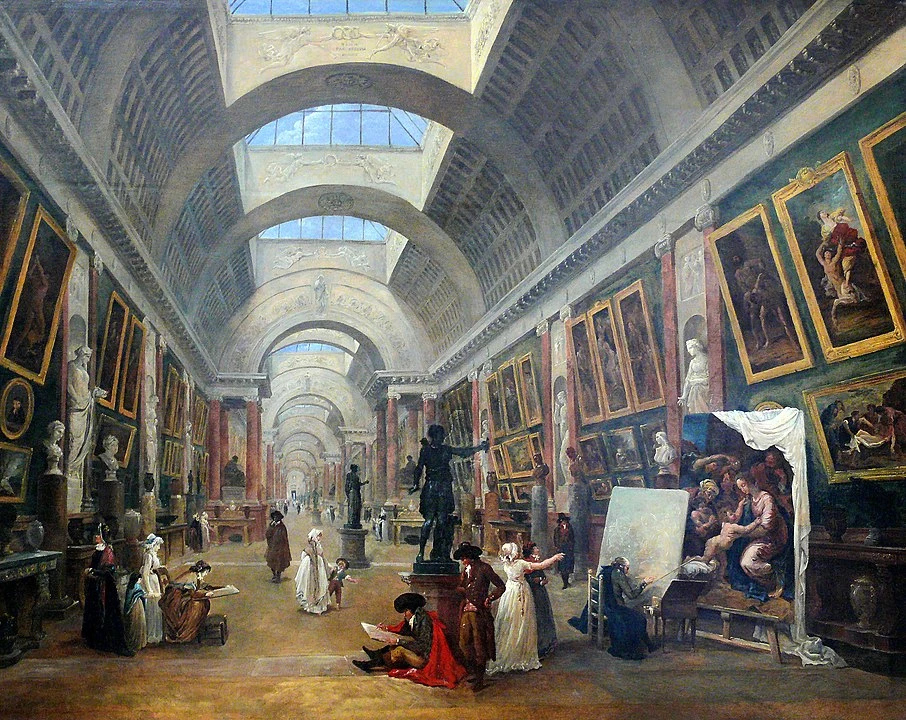
A project for the Grande Galerie du Louvre in 1796
The French Revolution officially made it a museum in 1793. At the time, it housed 660 works. The 19th century made it THE French museum. The collections were considerably expanded. Over the years, we added what the French discovered during the colonization. The Egyptian collection, in particular, became very important. What remained of the Crown diamonds (stolen in 1792, but largely recovered) was also installed in the Louvre.
The largest museum in the world
It is now the largest museum in the world. More than 7,000,000 visitors come every year to visit the 72,735 square meters of it, entering through the Great Glass Pyramid designed by Léo Ming Pei and inaugurated by François Mitterrand on March 4, 1988. 673 glass plates, 85 tons, 35 meters on each side and almost 22 meters high. Much contested at the time of its construction, it has become one of the stars of the Louvre alongside the Mona Lisa or the Venus de Milo.
Pyramide du louvre photo par Pavel L Photo and Video/Shutterstock.fr
The Louvre in practice: prices / opening hours / How to get there / Our tips
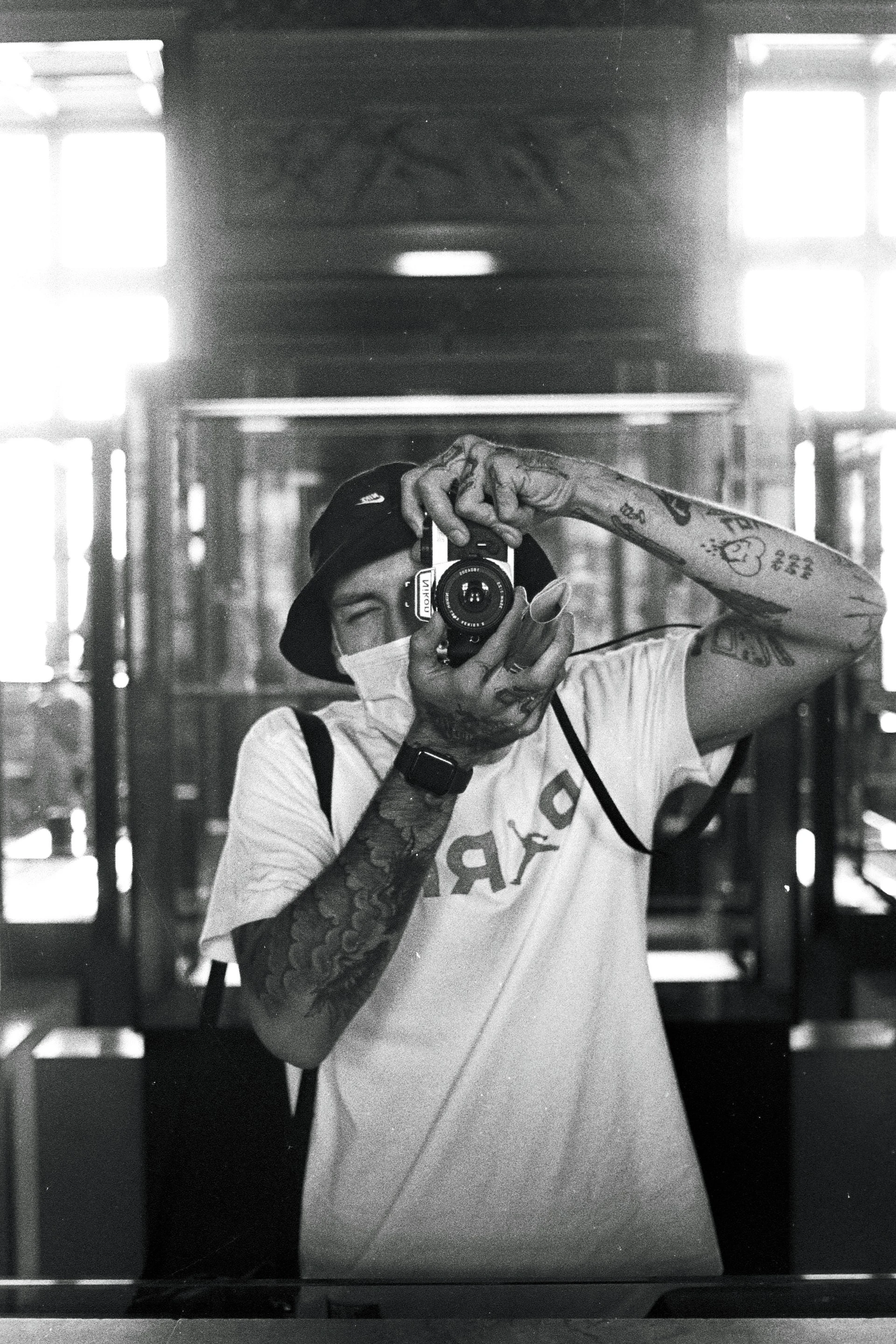
Ready to visit the Louvre? Let's go! Photo by Myriam Olmand on Unsplash
Getting to the Louvre:
There are several ways to get there. The main entrance is through the Louvre Pyramid. You can also access the museum through the Carroussel at 99 rue de Rivoli or through the Passage Richelieu also on Rue de Rivoli. If you are on foot, the easiest way is to type 99 rue de Rivoli on your GPS.
By Metro :
Line 1 and 7: "Palais royal / Musée du Louvre" station (it is quite nice by the way).
Line 14 : "pyramides" station.
By Bus :
Lines N°21, 27, 39, 67, 68,69, 72, 74, 85, 95 (play the lottery here!)
By car:
There is a parking lot located at 1 avenue du Général Lemonnier. It is open from 7am to 11pm and you can enter the Museum through the Caroussel gallery.
For the disabled
Access is available for people with reduced mobility. It is also possible to borrow a wheelchair.
For families
The museum is accessible to all, including families. You may be delighted to know that you can visit the Louvre in a stroller.
Luggage
Please note that large pieces of luggage may be refused, but there are lockers.
The Louvre pyramid is the main entrance to the Louvre Museum / interior view Photo by Myriam Olmand on Unsplash
Finding your way around the Louvre:
There is a very well done map that you can find here
It is also possible to follow different routes that you can find here (at the bottom of the page).
TIP: Finally, don't sulk and "pre-visit" the Louvre with the 3D tour you can find here.
Prices:
The basic rate is 17 euros.
It is free for children under 18 and free for children under 26 living in a European Union member state.
TIP: we strongly advise you to buy your tickets online to avoid long waiting hours at the entrances. To do this, nothing could be easier, go here and save a lot of time. (select english at the top of the page).
Every day, nearly 20,000 people pass by the Mona Lisa / Photo by Calvin Craig on Unsplash
Opening hours:
The Louvre Museum is closed on Tuesdays.
Some collections may also be closed occasionally for study or work. Click here to find out about them. (at the back of the page).
The usual opening hours are :
Monday / Wednesday / Thursday / Saturday / Sunday: 9am - 6pm.
Friday : 9H00 - 21H45.
The last admission is one hour before closing time, and the evacuation starts 30 minutes before closing time.
TIP: Avoid weekends and Wednesday afternoons. Favour the morning from the opening. Don't neglect the Friday night opening, which is not lacking in charm. There are far fewer people on that day after 6:00 pm.
WARNING : All our information is dated December 16, 2022. They may have changed. Any information given here does not commit the editor of the website. To check, always go to the official website of a monument before going there (and beware of the first occurrences that appear after searching, they may be sponsored links or paid services more expensive than the services of the monument).
Do you like Paris? Discover all our Parisian destinations here!

